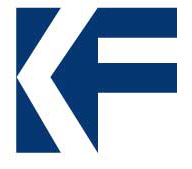Monthly Archives: September 2012
The future of journalism is bright because …”
September 28, 2012
It’s not hard to find people talking about what’s wrong with journalism these days.
But that’s not what we’re focused on here. One thing we believe is that this is a potential golden age of journalism. In all the changes happening to the news industry, we see opportunities. Opportunities for entrepreneurs, for young journalists and for veteran ones. Opportunities to use new tools and old knowledge to create great journalism for the 21st century.
In that vein, we are asking journalism innovators (we call them journovators) to complete this sentence: The future of journalism is bright because __________
We’ll collect their answers here in a running file. Check in when you need a moment of inspiration.
The future of journalism is bright because __________
- “We have the ability to use a lot of new tools to tell narratives.”
– Laura Norton Amico, Homicide Watch D.C. - “We still attract an amazing array of creative people, and people still want to know what’s happening in their communities and the world.
–Steve Buttry, Digital Transformation Editor for Digital First Media and Journal Register Company. - “There’s so many ways to find people to read your stories and to consume all the various products that you’re putting out. It’s a really exciting time to be working and to be publishing, and there’s just so many things that you can do that were never possible before with stories. Pretty much, as big as you can dream, that’s what you can produce. And that’s pretty cool.”
–Jake Naughton, multimedia projects coordinator for The Pulitzer Center. - “The future of journalism is bright because of journalists. Journlists are really smart and really creative thinkers, and we really have evolved with the industry. Whatever happens in journalism is because of the people who power it.”
– Mark S. Luckie, Manager of Journalism and News for Twitter. - “People have a connection to their virtual selves, and everybody is gaming, and gaming’s a great environment to make money, and if we start taking that environment to buiold news storuies, we’re gonna get rich again.”
– Nonny de la Pena, Immersive Journalist.
Knight Foundation announces News Challenge winners
September 20, 2012
The second round of winners in the Knight Foundation’s News Challenge were announced on Thursday at ONA, and each of the winners are potentially exciting innovations in the news and journalism space. This challenge revolved around data.
The winners are:
• Local Data, which is a set of tools that allow users to easily collect and organize data about their local communities.
• OpenStreet Map, a community mapping project, received a grant to build a set of tools that will allow more people to add information to maps.
• Census.IRE.org, which helps journalists more easily navigate the always challenging world of US Census data. The Knight Foundation award will allow the group to expand its work into other data sets.
• PopUpArchive, which allows users to better organize multimedia content online, making it searchable and sharable.
• Open Elections, which will create a standardized set of election results for federal and statewide elections in the United States.
• Safecast Radiation & Air Quality, which is striving to create a real-time map of the air quality throughout the United States.
We’re looking forward to learning more about all of these projects and perhaps interviewing them for the site.
For more information on all the projects, visit the Idea Lab.
About Brian Moritz
September 20, 2012
Brian Moritz
Editor, Journovation Journal
Research assistant, Peter A. Horvitz Endowed Chair for Journalism Innovation
Doctoral student, S.I. Newhouse School of Public Communications
 I’m a former sports reporter who walked away from my beat to find out why newspapers are struggling, what they can do about it and how the Internet is changing the way the media does business.
I’m a former sports reporter who walked away from my beat to find out why newspapers are struggling, what they can do about it and how the Internet is changing the way the media does business.
Along with my duties as the Journovation Journal Editor, and as a research assistant for the Peter A. Horvitz Endowed Chair for Journalism Innovation, I’m a second-year doctoral student at the S.I. Newhouse School of Public Communications at Syracuse University. My research focuses on journalists’ routines and how they are evolving. My research also focuses on media sociology and sports media and communications. I’ve presented my research at regional and national AEJMC conferences, as well as the Summit on Communication and Sport.
Before turning to school in 2009, I spent 10 years as a newspaper sports reporter. I worked for the Press & Sun-Bulletin (Binghamton, N.Y.) and The Times Herald (Olean, N.Y.). I’ve written for The Boston Globe, The Boston Herald, the Fort Worth Star-Telegram and the Baltimore Sun, among others. I’ve covered college basketball, minor-league baseball, the NCAA Tournament, the NHL playoffs, and the NFL, NBA and MLB. I voted in the AP men’s basketball Top 25 and broke coverage of the 2003 St. Bonaventure men’s basketball recruiting scandal, for which I won top-10 in the nation in the APSE national writing contest. I also won several writing awards in the New York State Associated Press Association state contest.
About Dan Pacheco
September 18, 2012
DAN PACHECO
Executive Editor, Journovation Journal
Peter A. Horvitz Endowed Chair in Journalism Innovation
S.I. Newhouse School of Public Communications
Syracuse University
Dan Pacheco is a digital journalist with 18 years of experience in news and information startups and new product development. After a year as a feature writer for The Denver Post, he joined the launch team for Washingtonpost.com in 1994, where he produced its first business, technology and community sections. He later spent six years at America Online launching and managing user-contributed content services.
In 2004, he joined The Bakersfield Californian, where he launched Bakotopia, the first social networking service for a local newspaper, and multiple web-print niche products. His work there earned a Newspaper Association of America “20 Under 40” award and two Knight-Batten Awards for Innovation in Journalism. The home-grown Bakomatic platform that powered these sites was purchased by the Arizona Republic and Sacramento Bee.
In 2007, Pacheco was awarded an $837,000 Knight News Challenge grant to run Printcasting, an experiment in cloud-based magazine creation. The service evolved into BookBrewer, an eBook and Print on Demand startup that is used by journalists, news organizations and self-published authors.
Journovator spotlight: Jake Naughton
September 17, 2012
Jake Naughton, the multimedia projects coordinator for The Pulitzer Center, spoke with Brian Moritz on Sept. 13 about his work creating digital journalism books.
[youtube]http://youtu.be/-ieEkbbw6Ds[/youtube]
Naughton discussed how The Pulitzer Center is creating books of original reporting that can be read on an iPad using the iBooks Author software. We talked about how these books can become multimedia projects and how they can help news organizations find new audiences.
The video runs about 20 minutes.
For more info on these books, visit The Pulitzer Center .
Journovator spotlight: Steve Buttry
September 17, 2012
Steve Buttry, an experienced digital journalist, joined Dan Pacheco’s “Creating the Next News Start-Up” class on Sept. 11 via Google+ Hangout.
[youtube]http://www.youtube.com/watch?v=EP2vxLRcuCM&feature=plcp[/youtube]
Steve, who works as Digital Transformation Editor for Digital First Media and Journal Register Company, spoke with the class about the changes going on within the newspaper industry as the print-to-online shift continues. He discussed his work online and in print and what the future holds for journalism.
The video runs about an hour and 20 minutes.
For more of Steve’s thoughts, visit his blog.
Journovation spotlight: Homicide Watch D.C.
September 17, 2012
There are at least two types of journalism innovations we’re interested in studying. There are the technical innovations that are changing the way news is gathered, the way news is delivered and the way news is consumed. And there are also conceptual innovations that are changing the way we as journalists view what is “the news.”
One site that is demonstrating both these types of innovations is Homicide Watch D.C.
Homicide Watch DC, which is run by Laura Amico and Chris Amico, covers every murder in Washington, D.C. The site covers every case, every step of the way, from murder to adjudication.
The site recently completed a successful Kickstarter campaign, raising more than $40,000 in a month. Because Laura Amico is on fellowship this academic year at Harvard (where she’s a Nieman-Berkman fellow), the site would have gone dark if they hadn’t raised enough money to pay for reporters to run the site during this year.
“Nobody wanted the site to go down,” Laura Amico said in a Google+ Hangout on Sept. 17. “No one in the community wanted it to go down. So we decided to turn it into a student reporting lab.”
The money raised will allow the Amico’s to hire at least five student interns to run the site this year. The campaign also raised the site’s profile, with David Carr writing about it in The New York Times and Clay Shirky writing an impassioned call for funding. “Homicide Watch matters because they are more than just thorough, they’re innovative,” Shirky wrote.
In several ways, Homicide Watch DC is re-conceptualizing what local journalism looks like in the digital world.
One of the most obvious is in its focus. Homicide Watch DC is intensely local and intensely focused. It works under the banner: “Mark every death. Remember every victim. Follow every case.” It’s a radically simple notion – the Amicos cover every murder in Washington D.C., every step of the way.
The approach was born out of Amico’s experience as a newspaper crime reporter and her own curiosity when she moved to Washington D.C. in 2009.
“I didn’t understand how the individual cases fit into a bigger narrative,” she said. “I didn’t know which ones fit in, and I thought I needed to get a handle on the 100s of cases. And that was a smart decision. It let us review the assumptions of which crimes are newsworthy.”
Those assumptions are built into the work routines of print and television journalists.
“I think TV media does some of the best crime coverage, especially here in DC,” Amico said. “But they’re looking for that good shot, that good scene. And if happened late at night and it’s cleaned up by morning, there’s no shot. For print, there are different requirements.”
For Homicide Watch, D.C., there are no requirements. There is no news judgement, no wondering if this is worthy a story or not. If it’s a homicide it’s covered. Same as every other one.
To do so brings in the technological innovation – a database that is the site’s engine. The database allows the Amicos to follow each case, to collect data on every murder in Washington and to publish that information as they receive it. This information, which is often gathered piecemeal as it comes in, goes into the database.
“As I’m reporting on a case, I can fill in the location, the age, whatever,” Amico said. “So when, say, it’s Monday morning, there were three murders of the weekend, is that a lot? Or if I want to go deeper – who was killed this year, or are there a lot of plea deals vs. verdicts, I can do all of that with our database.”
The technological aspect of the site highlights another innovative approach the Amico’s take to their site. The site isn’t built around stories in the way that newspapers are or traditional news organizations are. It’s built around the database. Stories are a part of that and come out of that. But the crux of the site is the information, not the story.
“I love to write, I became a journalist because I love to write, and when I look at some of the things on Homicide Watch, I think ‘This isn’t all great writing,'” Amico said. “It’s a lot more about the information and being a community resource than it is about great writing. Ideally, at some point, there ends up being a well-written story. But I don’t have to come back and write the 40-inch story the next day about it. At Homicide Watch, we can take the time we need to get there and to build narratives.”
That time also allows for one of Homicide Watch’s other conceptual innovations. It is built, in many ways, around the community it serves. Community members comment on stories, connect through email, social media and any other way you can imagine. The site shows that being a news organization is as much about being a community resource than it is about being a reporting center.
This comes through in how Amico deals with the victims’ families.
“When I worked as a traditional reporter, you’d go out to a crime scene and you were not allowed to come back without “The Quote,” she said. “The way we do things now, I don’t need that quote immediately. If their mother or brother would rather not say something to me right now, if they’re not ready to talk, I don’t want to force them to. Instead, I’ll give them my card and tell them I’m doing a story for tomorrow, if you would like to say something, you can leave a comment on the story or here’s how to get in touch with me later, here’s my e-mail, my phone number. If you’d like to get in touch with me later, that’s fine.
It really puts the power in their hands.”
About the Journovation Journal
September 1, 2012
Welcome to the Journovation Journal, a publication about innovation in journalism. We operate out of the S.I. Newhouse School at Syracuse University with support from the Peter A. Horvitz Chair in Journalism Innovation. I’m Dan Pacheco and, with a lot of help from research assistant Brian Moritz, I’m behind this site.
Why focus on journalism innovators? Technology has turned the traditional news business model on its head, but it’s also creating a renaissance in how journalists inform and connect with their audiences. The purpose of the Journovation Journal is to to put a bright spotlight on the future of news, from innovative projects in existing newsrooms, to journalism startups, to entrepreneurially-minded freelance journalists.
It’s our overarching belief that the future for journalists is bright as long as they focus on how best to meet the needs of the audiences they seek to inform. Individual success stories abound, but they are often drowned out by the larger discussion about how to save the news industry and practices of the last century
While we think that discussion is important, we also feel that it’s well reported elsewhere. Our goal with the Journovation Journal is not to figure out how to fix the past, but to focus on the future and the opportunity it presents. The lessons learned here can inform both legacy news organizations looking to improve their digital game, and “entrepreneurial journalists” who are doing it on their own.
Here are just few ways that the future is bright for journalists who take advantage of everything the digital ecosystem has to offer.
1. Curation is King. Networked digital devices such as the personal computer and mobile devices have led to an explosion in information and opinion. People have more access to instant information at any time in history, but as that sea of information grows deeper, how can they be sure what they’re receiving is true, accurate and balanced? Far from killing opportunity, digital publishing and social media create an even bigger need for journalists to help people separate the wheat from the chaff.
2. New Business Models Abound. Digital publishing creates new ways for journalists to fund their important work. In the past, only a few privileged organizations could afford to print, distribute or broadcast the same message to millions, and as a result those companies could charge a premium to advertisers.
Today, millions of people can publish highly targeted messages directly to each other, and the advertisers have more choices than they know how to leverage. This fundamental disruption in supply and demand makes it exceedingly difficult for legacy news organizations to adapt, but there is a silver lining. Smart journalists and news organizations are now free to create entirely new products and relationships with advertisers, and explore new ways of funding their activities.
This isn’t just an idea or a theory, but a reality. The Journovation Journal will highlight entrepreneurial journalists who take novel approaches to funding their work, and are willing to share what works for them so others can follow in their footsteps.
3. The Journalist is the Brand. Social media such as Twitter, Facebook, Google Plus and Pinterest make it possible for journalists to aggregate audiences that are many orders of magnitude larger than any they were able to reach through old media forms. But more than that, they’re able to directly reach their followers without spending a penny.
In the past, writers got a name through the media outlets they wrote for, but that’s no longer the only path to growing an audience. The definition of who qualifies as a journalist is also expanding through blogs and citizen media. We will highlight journalists who are creating a name for themselves or their organizations in the social sphere and using their newfound power for civic good.
The future of journalism is bright if you know where to look. We look forward to telling the stories of journovation that are all around us.
– Dan Pacheco, Peter A. Horvitz Endowed Chair in Journalism Innovation



